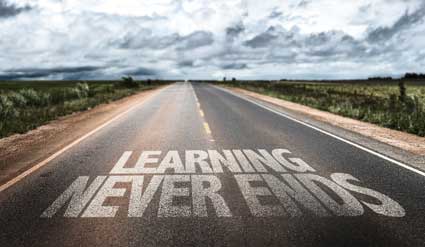Assertive discipline was a system developed by Lee Canter in the 1970s. Lee Canter's background in social work (he holds a master's in social work) led him to a focus on classroom management. Assertive discipline is very structured and systematic. It's main design proposes to help educators run a classroom in which the teacher is in charge. While consulting for many school systems throughout the United States, the Canters found that the majority of teachers were having difficulty controlling bad behavior in their classrooms. They also found that many teachers were lacking appropriate training in classroom management. Using a positive behavior management model that focused on cooperation, rather than authoritarian methods, to gain positive classroom behavior, the Canters hit upon a truly workable device that has helped thousands of teachers gain confidence in the classroom. Assertive Discipline has grown considerably since the 1970s and is currently one of the most widely used classroom management training programs in the world.
Overview
This method teaches that the teacher has a "right" to decide what is best for his or her students. Teachers should determine what is best for all students and then expect compliance. The main axiom of this method is that no student should ever prevent a teacher from teaching or keep another student from learning, period. In order to achieve this axiom, teachers must behave assertively, not aggressively or passively. They must be consistently assertive in their wants and expected behavior in the classroom. This works well, because the students see the teacher is firmly requesting a standard of behavior, and that he or she is going to take assertive steps to ensure that students respect their wishes. This method has the teacher giving clear, firm direction, which, if followed, is met with positive reinforcement; if not followed, the undesired behavior is met with negative consequences. Students are not viewed as enemies and are not treated with a hostile or sarcastic attitude. Rather, students are viewed as allies who are expected to cooperate for the good of all. Teachers who have adopted this method say it is easy to use and implement. Having the ability to be assertive is key to this method. If you are a teacher who has trouble being assertive, a course on assertiveness may be of assistance to you.
Assertive Discipline Techniques
- I will not tolerate any student stopping me from teaching.
- I will not tolerate any student preventing another student from learning.
- I will not tolerate any student engaging in any behavior that is not in the student's best interest, and the best interest of fellow students.
- Whenever a student chooses to behave appropriately, I will immediately recognize and reinforce that behavior.
- I am an assertive teacher and I am the boss in my classroom.
Central methods of assertive discipline:
- Make the rules very clear; don't be ambiguous.
- Catch students being "good."
- Recognize and support students when they behave appropriately.
- Consistently let students know you are happy with good behavior (be specific).
- Reward exceptional behavior.
- Make clear what the consequences are for bad behavior.
- Follow through with negative consequences for breaking the rules.
Conclusion
Assertive discipline is a simple, effective system to assist teachers in achieving peace and structure in the classroom. It is the most popular classroom management method because of its simplicity and effectiveness. This method requires that the teacher use an attitude of cooperation and a "take-charge" assertive attitude to elicit that cooperation from students. It also requires that the teacher catches her students "being good." The rules have to be clear, and expectations must be defined at the outset. Consistency, fairness, and follow-through are key.
You Decide:
Jake has been using assertive discipline in his classroom for about two months. He has set clear guidelines, posted the rules on a board in the class for all to see and has consistently, but casually, pointed out students who are behaving to his standards. Jake's fifth rule is "if you are late for class, please do not disrupt everyone's learning, quietly take your seat and give me your note/explanation after class." Jake has three students who play on the school football team together, they are close friends. For the most part, they are good students who do not disrupt the class. Jake loves football; he and most of the other students like to hear how the team is doing after class and they usually get a quick update from the three boys. Ever since football season has started, these three boys have been walking into class late as a group after practice, and have been being loud and boisterous upon entering. Using the assertive discipline method, what should Jake do?
You Decide Answer:
Jake should point out that he understands they are pumped up after practice and that it is hard to take it down a notch, however, they are disrupting the learning of their fellow students. He needs to let the boys know, in no uncertain terms, that this behavior is unacceptable and will not be tolerated. He should clearly remind them of rule number five. If they walk in after the next practice quietly and with respect for their fellow students, he should acknowledge that with positive feedback at the end of class. If, however, if they are disruptive again, negative consequences should be administered; such as contacting the football coach, parents or principal.
There is no room for favoritism with assertive discipline. There needs to be mutual, equal respect for all students in the class.
Cooperative Discipline
Cooperative discipline was developed by Linda Albert and Rudolf Dreikurs, and uses the theories of Alfred Alder, who created classic Alderian psychology. Like assertive discipline, it proposes to use the cooperation of students to achieve good behavior in the classroom. The basic premise of this model is that students misbehave to achieve one or all of four goals: attention, power, revenge, or avoidance of failure. It is up to the teacher to determine which goal is driving the behavior of the student and help thwart it by using cooperative discipline techniques.
Overview
While many classroom management and discipline methods provide input to teachers on how to address bad behavior while it is occurring, most do not help teachers stop the behaviors from recurring again in the future. Cooperative discipline seeks to address this issue by having teachers put strategies in place that will build a student's self-esteem, thus encouraging them to change old behaviors and develop an interest in cooperating and learning. Encouragement techniques are not time-consuming for the teacher, and they are easy to learn and practice. The purpose is to make the misbehaving student feel they are valuable members of the classroom.
Cooperative Discipline Techniques
The Three C's
In cooperative discipline, there are three main categories that can be used to create an environment of encouragement. They are:
Capability: The students need to feel capable of completing their work to satisfaction. There are three ways to accomplish this:
- Create an environment where it is safe to make mistakes.
- Build students' confidence by focusing on improvement for all students.
- Make learning objectives obtainable for all students.
Connection: Students need to know they can develop positive relationships with teachers and fellow students. There are four ways to accomplish this:
- Be accepting of all students, no matter what his or her past behavior was; show that you like the person, not the behavior.
- Listen to students and show an interest in their lives outside of class.
- Give praise.
- Build relationships with kindness and respect.
- Involve all students in making decisions; praise helpful suggestions.
- Use cooperative learning groups.
- Use peer tutoring.
The point of cooperative discipline is to create an environment that encourages collaboration. Have your students help you develop a code of conduct in the classroom. This will help them stick with the rules.
The Four Goals of Misbehavior and How to Manage Them
As mentioned in the introduction, according to cooperative discipline theory, in the majority of cases, there are four main goals that drive a student to misbehave:
|
Goals |
Student's Reasoning |
Intervention Methods |
|
Attention |
I want to be center stage. If I disrupt the class, I will get everyone's attention. Making noise, using obscenities, not listening to the teacher, will all get me the attention I want from my peers and the teacher. |
Stand close to the student while continuing the lesson. Give a negative look to the student. Distract the student by asking a direct question. |
|
Power |
I want to be the boss. I am smarter than the teacher. I want things my way. Who is she/he to tell me what to do? |
Acknowledge the student by telling them they are right, but that there will be consequences to their refusal to follow classroom procedure. Change the activity unexpectedly. Give a "choice" time-out; sit quietly or go to the principal's office to sit quietly. |
|
Revenge |
I feel hurt by real or imagined slights from other students and/or the teacher. I want to break things, cause damage, and manipulate others into feeling guilty and sorry for me. |
Revoke a privilege. Create a bond, make sure the student knows you like them and care about them, but do not like their behavior. Make them, clean, replace, or repair any damage they have caused. |
|
Avoidance of failure |
I feel that I can't live up to the expectations everyone has for me. I don't think I have the potential they say I do. If I procrastinate, pretend I have a disability, or don't do my work correctly, everyone will just back off and leave me alone. |
Acknowledge the difficulty of the task, and remind them of past success. Regal them with "I can" statements so they will learn to internalize that positive idea and replace "I can't," thoughts. Have peer tutors work with the student. Modify the lesson. |
Conclusion
Cooperative discipline seeks to reach collaboration with students. However, if collaboration cannot be achieved because of a student's misbehavior, then steps should be taken to correct the problem. The three C's -- capability, connection, and contribution -- help teachers build strong bonds with their students. Teachers should keep in mind that with this method, forming trusting, cooperative relationships is key. Additionally, this method holds to the theory that students misbehave to achieve one of four goals: attention, power, revenge, or avoidance of failure. It is up to the teacher to decide which is motivating the student and to respond appropriately and immediately.
You Decide:
Mrs. Jones has been using the three C's to build bonds with her students. She has a great group of students in her fifth grade class who usually get along very well. However, one has been misbehaving frequently over the last few weeks. Sam has been pretending to have vision problems. He has not been finishing his work, complaining that he can't see the paper or the board.
You Decide Answer:































